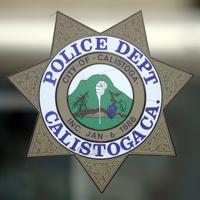We are all creatures of habit, and occasionally we’re controlled by prejudices that may be unwarranted by recent developments that aren’t thoroughly explained.
For example, many older wineries that are in business for eras make substantial upgrades in their wines and get little credit. The public often doesn’t understand the improvements.
This happens a lot with wine regions. Case in point: Several dozen New York Rieslings sell for less than $20, but are worth twice as much.
In some cases, long-established wineries’ prices don’t rise because their image in the marketplace is the prevailing belief from decades earlier — even though wine quality has improved markedly.
Among the dozens of long-established California wineries that have high-quality operations, one I recently looked at has possibly the most to justify price increases.
J. Pedroncelli Winery grew out of a 1927 (!) purchase of vineyard land in the Dry Creek area of Sonoma County by John Pedroncelli Sr. – in the midst of Prohibition! The wines have been sound, tasty, varietally correct, and fairly priced for nine decades.
Its most recent change came quietly five years ago when longtime winemaker John Pedroncelli turned the reins over to Catalonian-reared Montse Reece, who worked with John for seven years. Montse (mont-seh) brought an inquisitive, experimental view and almost all the winery’s wines began to show style changes.
Because the marketplace has always viewed Pedroncelli as reliable and not necessarily world-class, few analyzed how the wines have begun to show more distinctiveness.
However, the winery’s retail prices were subject to marketplace expectations. Since the family owned all its land free of debts, prices didn’t have to rise. So they didn’t.
I did an online virtual tasting with Montse recently. I tried some of the current wines without knowing suggested retail prices. Instead, I took a guess as to what I thought each wine would sell for based solely on wine quality. I ignored the winery’s image from decades ago.
2018 Chardonnay, Dry Creek Valley – Bright citrus-leaning aroma with a trace of tropical fruit. Light hints of oak, only 15% malolactic fermentation to add some mid-palate weight; there is depth from some oak and lees contact. Good acid (.66) and pH (3.37), just 13.5% alcohol. It benefited from being released slightly later than usual.
Good value at $26. Actual Suggested Retail Price (SRP): $17.
2019 Rosé, Sonoma County – The back label says it’s all Zinfandel (long a family favorite for pink), but it’s drier than some past vintages. Strawberry/fresh cherry, attractive mid-palate fruit leaning toward light red. Its 13.5% alcohol adds a slight weight to the finish.
Good Value at $19. Actual SRP: $17.
2018 Pinot Noir, Russian River Valley: Lovely, slightly rustic cherry and raspberry aroma, medium-weight fruit. Fairly complex for a lighter-styled red with perfectly honed tannins. Serve slightly cool. Needs another year to open up. No assertive oak to challenge attractive fruit.
Good value at $32. Actual SRP: $22.
2018 Sangiovese, Dry Creek Valley, Alto Vineyard: Distinctive bright strawberry/plum fruit with subtle notes of oak for complexity. Excellent acidity (low pH of 3.37!). The wine begs for tomatoe-y pasta dishes. “Aeration will help the wine very much,” said Reece.
Good value at $28; Actual SRP: $18.
2017 Cabernet Sauvignon, Dry Creek Valley, Block 007 Estate: The vineyard was planted 1992 and is different from other blocks because it uses a specialized dual-level trellis system. More varietally complex than many Cabs, picked relatively early to capture herbal notes. Truly complex and one that will be better in 6-10 years.
Good value at $38. Actual SRP: $26.
2018 Zinfandel, Dry Creek Valley, “Mother Clone”: Bright raspberry/pomegranate, blackberry, blueberry fruit. Superb varietal complexity with perfect balance. A dramatically fine Zin.
Good vale at $28. Actual SRP: $19.
Keep in mind that all the above wines may be found discounted below SRP.
Strategies for re-opening
On another topic, with re-openings of old favorite restaurants, dining out has taken on a new meaning for most Americans. Not only are we still distancing, but some places have created patio seating and are using tight-space dining rooms spartanly.
As bleak as life can seem under coronavirus social distancing guidelines, it’s clear that the restaurant industry needs re-opening strategies that allows them to rebuild business as fast as possible.
But re-openings will challenge restaurants in different ways with the main goal a return to normalcy.
Despite the gloom caused by months of inactivity, could there be good news ahead? Could a restaurant’s wine program provide a pathway to a return to normality? More importantly, aren’t re-openings the perfect time to experiment with some adventuresome ideas to encourage diners back in?
Creative restaurant ownership may view this time as a way to test new ideas making use of wine as way to do things better. The 2020 re-opening of restaurants may be the perfect time to re-strategize old wine-marketing systems.
No one knows if new ideas will work, but it seems odd for dining establishments to remain fixed in all the old systems without trying some new ideas.
Here are a few ideas that may help restaurants back to normalcy sooner:
— Reduce overall wine inventories.
Many restaurants traditionally carry numerous wines of the same varietal. It may be time to trim lists to reduce costly inventories that damage cash flow. If you now have eight Chardonnays, wouldn’t six be just as profitable?
— Drop prices on older, pricier wines.
Mature reds once were upscale wine lists’ gold standard. But millennial wine buyers seem more interested in young, fruit-driven wines. Old reds are hard to move and can be pricey. Several restaurants now are selling some of their older wines direct to regular patrons to turn liquids into liquid assets.
— Reduce profit margins on wines made from “alternative” grapes.
To encourage more sales of Riesling, Gamay Noir, Barbera, Cabernet Franc, etc., consider smaller markups on such wines. To maintain high markups on obscure varietals is a questionable tactic.
— Actively encourage by-the-glass buyers to seek a taste.
Offering one-ounce tastes of by-the-glass wines is the vinous equivalent of a quid seeking a quo. Darden Restaurant group has long used this tactic to sell lots of wines by-the-glass at its Olive Garden chain.
— Reopen with wine specials.
Consider offering all bottles at 50% off for the first two months back in business.
“Absolutely,” said Steve Situm, a longtime Northern California wine wholesaler. “Restaurants are gonna need something to bring customers back in. Offering wine specials like that right off the bat might be a way to get wine lovers back faster.”
Or offer 40% off any wine on the list every weeknight, or on two or three days of the week.
— Drop corkage charges on weeknights.
Let regulars know (through flyers, advertising, website notices, emails) that corkage for any wine not on the list is zero on Monday, Tuesday, and Wednesday nights.
Said Situm, “In San Francisco and other major cities, a lot of restaurant guys are going to go out of business because of high rents.
“So when they re-open they’re gonna need an incentive to bring back regulars and kick-start the revenue stream. Free corkage at the start could be the trick. For midweek nights, that could be a good long-term strategy.”
When restaurants reopen, he said, “It’ll be like the end of Prohibition, people will be wanting to get back out to dine.”
One way to determine if a corkage-free strategy is working is to track overall check totals compared with non-corkage-free nights.
Wine of the Week: 2019 Foppiano Sauvignon Blanc, Russian River Valley ($19) – Lovely blossom-graced aromas of citrus/tea, and subtle dried herb notes. Dry entry and mid-palate, and made with great care so it works well with food – it’s not sweet, as are so many cheaper wines.




















